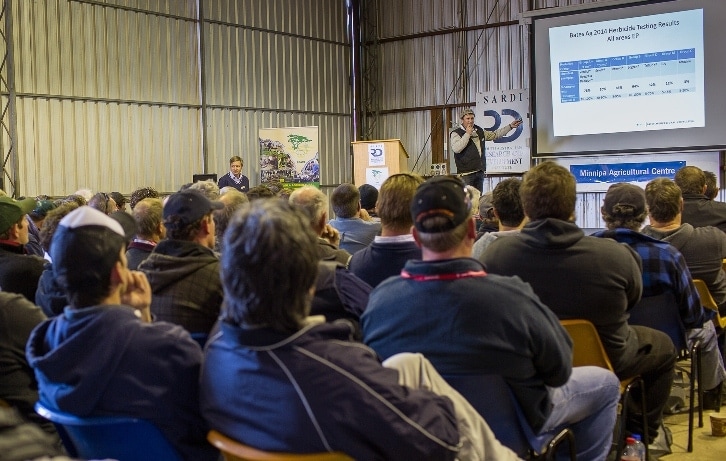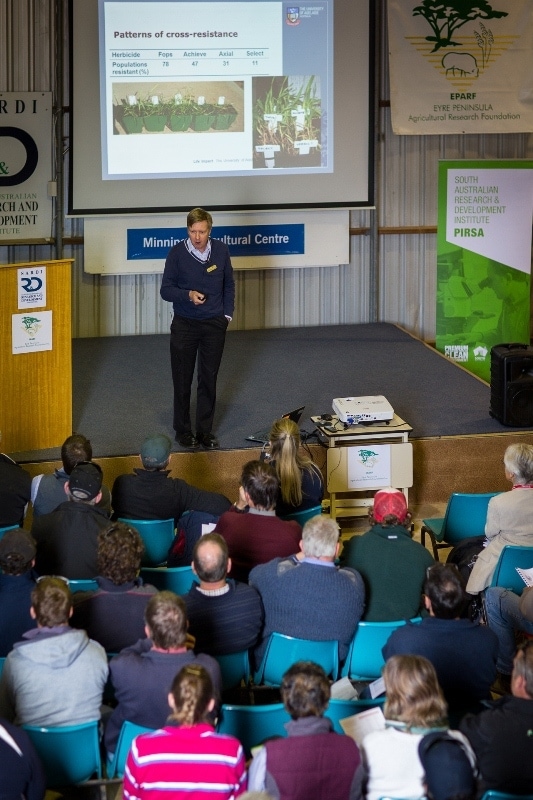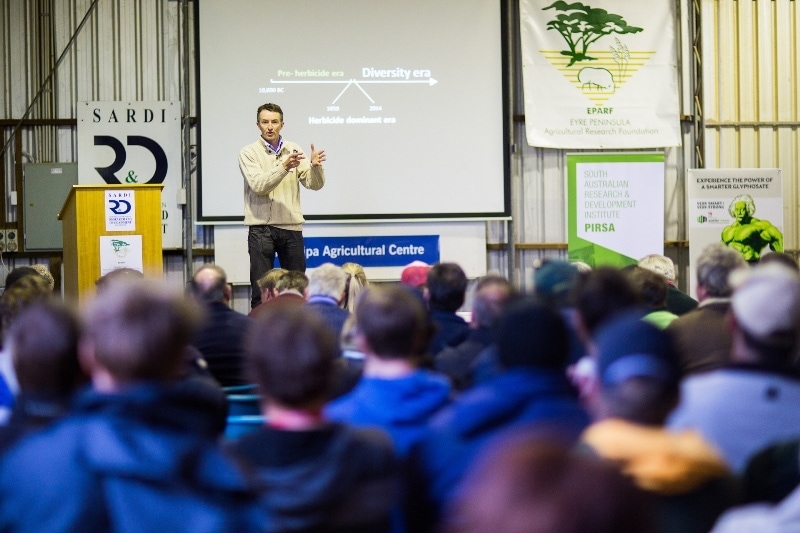EPARF Member Day 2014
The 'Putting the Lid on Herbicide Resistance' day held at Minnipa Agricultural Centre was attended by over 150 participants.
Guest speakers addressed current and potential problems with the development of resistance to many of the key herbicides and presented ideas on diverse weed control tools, stressing that herbicides are not the answer to herbicide resistance.
Immediate feedback from growers using keepad technology was beneficial for speakers to target their presentation specific to the audience attending. This evaluation indicated the weed of most concern was annual ryegrass, followed closely by barley grass then brome grass.
Dr Chris Preston, University of Adelaide addressed the current state of weed resistance on Eyre Peninsula, the factors responsible for the evolution of herbicide resistance and rye grass control tactics in the long term.
Ed Hunt, farm consultant Wharminda, further examined local weed issues and potential next problems.
Ben Fleet, University of Adelaide spoke on the increasing incidence of barley grass in the cropping system with management strategies to delay resistance and prolong the effectiveness of cheap and effective herbicides.
Sam Kleeman, University of Adelaide stated that brome grass has become a serious weed on central and upper Eyre Peninsula where few herbicides are available for control. The ecology of brome grass has changed, making it more problematic to control in crops.
Peter Newman from Australian Herbicide Resistance Initiative, WA addressed diverse weed control tools to continually erode the weed seed bank. Peter presented research results on different chemical, cultural and mechanical methods and options available.
The program finished with a lively panel session facilitated by Andy Bates, farm consultant Streaky Bay/EPARF Board member. Speakers responded to questions from the audience on practical applications of what was presented during the day with majority of farmers indicating they would test for herbicide resistance and actively manage weed seeds at harvest within the next 5 years, with windrow burning the most likely practice to be adopted.





